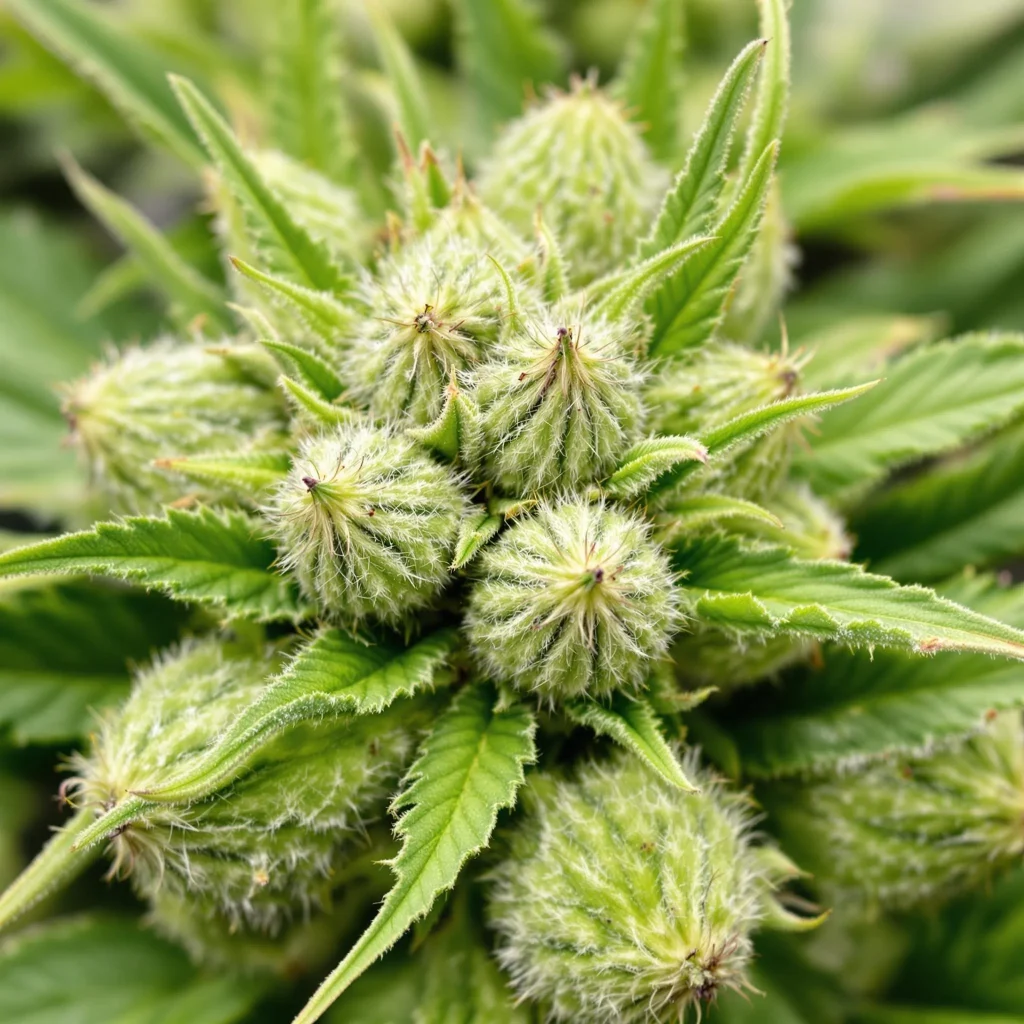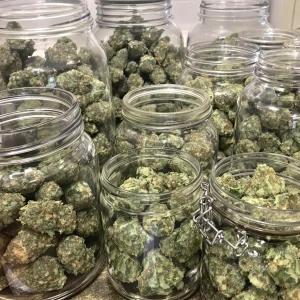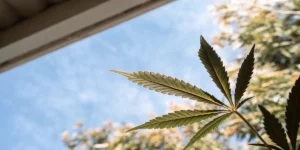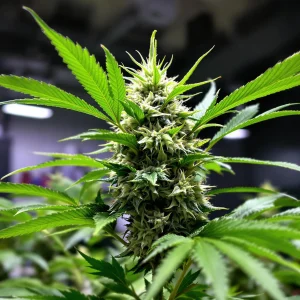Identify male vs early signs of female plant, knowing whether your cannabis plant is male or female before it starts flowering can significantly impact your growing success. This knowledge allows you to maximize resources and avoid the complications of unwanted pollination. Identify male vs early signs of female plant requires close observation and a basic understanding of cannabis growth stages.
Why Identifying Plant Sex Early Matters
Knowing the sex of your cannabis plant early in its growth cycle is essential for achieving optimal results. Male and female plants contribute differently to the growing process, and know their function helps you make strategic decisions. This ensures that you maximize yield, potency, and the overall health of your crop.
By identifying plant sex early, you prevent costly errors that could compromise your harvest. Early detection allows you to eliminate male plants if they are not required or isolate them for breeding purposes. This targeted approach streamlines your resources and enhances the quality of your end product.
Preventing Unwanted Pollination
Male cannabis plants release pollen that can fertilize female plants, leading to the production of seeds instead of resin-rich buds. This diminishes the quality of the crop, as seeded buds are less potent and less desirable for consumption. Identifying and removing male plants early safeguards the integrity of your harvest.
Pollination is not only undesirable but also difficult to reverse once it occurs. By detecting male plants before they mature, you ensure that female plants can focus their energy on producing cannabinoid-rich flowers. This proactive step is crucial for achieving high-quality, seedless buds.
Saving Time and Resources
Early identification of plant sex allows you to allocate your resources more effectively. Female plants, which are prized for their buds, require ample light, nutrients, and space. By removing male plants promptly, you avoid wasting these valuable resources on plants that do not align with your goals.
Additionally, nurturing only female plants reduces the labor and maintenance required to monitor and manage your crop. This focused effort increases efficiency and ensures that your time and energy are spent on maximizing the potential of your female plants.
Key Differences Between Male and Female Cannabis Plants
Male and female cannabis plants exhibit distinct physical traits that make it possible to differentiate them. These differences become more pronounced as the plants mature, helping growers make informed decisions during the vegetative and pre-flowering stages.
Understanding these characteristics is crucial for effective cultivation. Male plants are typically taller and more robust, with thicker stems that support their role in spreading pollen. Female plants, on the other hand, are bushier and prioritize energy for bud production, making them the cornerstone of a successful harvest.
Growth Patterns
Male cannabis plants tend to grow taller than females, with sturdy stems and fewer leaves. This vertical growth supports their role in dispersing pollen over a wide area. While this characteristic makes them easy to identify, it also highlights the importance of removing them promptly if they are not needed.
Female plants, in contrast, grow wider and develop more branches to support bud formation. Their bushy growth pattern is optimized for producing resinous flowers, which are rich in cannabinoids. Recognizing these growth differences early ensures that you can tailor your care to each plant’s needs.
Pre-Flower Differences
Pre-flowers, which develop at the nodes where branches meet the main stem, are key indicators of a plant’s sex. Male pre-flowers are small, round sacs that eventually open to release pollen. These sacs appear smooth and lack any hair-like structures, making them distinct from their female counterparts.
Female pre-flowers, by contrast, are teardrop-shaped calyxes that sprout fine, white pistils. These pistils are essential for catching pollen, but they should remain unfertilized for maximum bud quality. Observing these subtle differences during the pre-flowering stage helps growers identify and manage their plants effectively.
How to Identify Male vs Early Signs of Female Plant
Identifying the sex of your cannabis plants requires close observation and attention to detail. Pre-flowers, which appear during the vegetative stage, offer the most reliable clues. Regular inspections at this stage ensure timely action to protect your crop. Male and female plants show their sex at different times, with males often maturing earlier. Recognizing these signs early allows you to take the necessary steps, whether it’s removing male plants or preparing females for optimal bud production.
Identifying Male Plants
Male plants typically reveal their sex first, producing small, ball-shaped pollen sacs at the nodes. These sacs are smooth and rounded, and they increase in size over time. If left unchecked, they eventually open to release pollen, which can fertilize nearby female plants.
Removing male plants as soon as they are identified prevents unwanted pollination and helps maintain a seed-free crop. Regular monitoring of the nodes during the vegetative stage ensures that male plants are detected and managed before they reach maturity.
Recognizing Female Plants
Female plants are slower to show their sex but are easily identifiable by their teardrop-shaped calyxes with white, hair-like pistils. These pistils are the plant’s reproductive organs and play a vital role in catching pollen. For optimal results, female plants should remain unfertilized.
Monitoring your plants closely during the pre-flower stage ensures that you can distinguish females from males. Early identification allows you to focus your resources on nurturing the female plants that will produce high-quality buds.
Using Timing to Your Advantage
Pre-flowers typically begin to appear 4-6 weeks into the vegetative stage. This is the ideal time to inspect your plants closely and identify their sex. By observing your plants regularly during this period, you can take timely action to separate males from females and once your garden is thriving, enhance your overall cannabis experience by learning how to use a weed bowl to master your smoking technique. Male plants often develop pre-flowers earlier than females, giving you a head start on removing them. Using this timing advantage ensures that your female plants remain unaffected and can continue to thrive.
Tools and Techniques for Male vs Early Signs of Female Plant
Advanced tools and techniques can significantly improve your ability to identify plant sex early. These methods provide growers with the confidence and precision needed to manage their crop effectively and avoid unintended pollination.
From magnification tools to genetic testing kits, a variety of options are available to suit different budgets and levels of expertise. Implementing these tools in your growing process ensures accurate identification and better outcomes.
Magnification Tools
Handheld magnifying glasses or microscopes are invaluable for examining pre-flowers in detail. These tools make it easier to differentiate between male pollen sacs and female calyxes, especially during the early stages of development.
Inexpensive and easy to use, magnification tools are a practical option for growers at all levels. By investing in these tools, you can improve your observation skills and make more informed decisions about your plants.
Consistent Monitoring
Regular inspections of your plants during the vegetative stage are crucial for accurate identification. Focus on the nodes, as this is where pre-flowers are most likely to appear. Consistency in monitoring ensures that no changes go unnoticed. Establishing a routine for checking your plants every few days helps you stay ahead of potential issues. This proactive approach minimizes risks and ensures that your crop remains healthy and productive.
Genetic Testing
For growers seeking absolute certainty, genetic testing kits offer a reliable solution. These kits analyze a small tissue sample from your plant and determine its sex with near-perfect accuracy. While more expensive, they are ideal for large-scale operations or growers aiming for precision. By incorporating genetic testing into your cultivation process, you eliminate guesswork and gain valuable insights early in the growth cycle. This allows for better planning and resource allocation, ultimately leading to a more successful harvest.

What to Do After Identifying Male Plants
Isolating Male Plants
If you intend to use male plants for breeding purposes, it is essential to isolate them from your main grow area. Male plants release pollen that can travel through the air and fertilize nearby female plants. This accidental pollination can drastically reduce the quality of your harvest by producing seeded buds.
Proper isolation involves placing male plants in a separate, well-ventilated space with controlled airflow. This ensures that pollen does not spread unintentionally. Using physical barriers, such as sealed grow tents, can further minimize the risk of cross-pollination and allow you to use male plants effectively in breeding projects. Identifying male plants early is crucial to preventing these issues.
Removing Male Plants
For growers focused on producing high-quality buds, removing male plants as soon as they are identified is a critical step. Male plants do not produce the resinous flowers sought after in cannabis cultivation, making them unnecessary for most growers. Immediate removal protects the female plants from pollination and maximizes the potency of your crop.
When removing male plants, be cautious to avoid disturbing the pollen sacs, as they can release pollen even during disposal. Bag the plant carefully and remove it from the grow area entirely. This minimizes the risk of any lingering pollen affecting your female plants. Identifying male plants ensures a seed-free and potent harvest.
Managing Hermaphroditic Plants
What Are Hermaphrodites?
Hermaphroditic plants, often referred to as “hermies,” are cannabis plants that develop both male and female reproductive structures. This phenomenon can occur due to environmental stressors, such as irregular light cycles, extreme temperatures, or nutrient deficiencies. Hermies can pose a significant risk to your crop by self-pollinating or pollinating nearby female plants. Identifying male plants alongside hermies ensures optimal crop management.
Understanding the causes of hermaphroditism can help you take preventive measures. Genetics also play a role; some strains are more prone to hermaphroditism than others. Choosing stable genetics and maintaining optimal growing conditions can reduce the likelihood of encountering hermaphroditic plants.
Identifying and Handling Hermies
To identify hermaphroditic plants, inspect the nodes for the presence of both pistils (female structures) and pollen sacs (male structures). These traits may appear on separate branches or even within the same flower. Regular monitoring of your plants is essential to catch these signs early.
If you find a hermaphroditic plant, you have two options: isolate it to prevent pollination or remove it entirely. Removing hermies is often the best choice for preserving the quality of your crop. If isolation is chosen, ensure the plant is kept far from female plants, with no shared airflow between the spaces. Identifying male plants and hermies together ensures a clean and healthy crop.
Environmental Factors Affecting Sex Expression
Stress and Hermaphroditism
Environmental stress is one of the leading causes of hermaphroditism in cannabis plants. Factors like light leaks during the dark cycle, irregular watering schedules, and extreme temperature fluctuations can disrupt the plant’s natural growth processes, increasing the risk of developing both male and female traits. Identifying male plants early reduces the stress on your crop.
Maintaining a stable environment is key to reducing stress. Ensure your grow area has consistent light schedules, proper ventilation, and temperatures within the ideal range for cannabis cultivation. Addressing these factors minimizes the chances of hermaphroditic traits and supports healthy plant development.
Male vs Early Signs of Female Plant: Optimal Growing Conditions
Creating the ideal environment for your plants promotes healthy growth and reduces the likelihood of stress-induced issues. Maintain temperatures between 70-85°F and humidity levels appropriate for each growth stage. During the flowering phase, lower humidity levels to prevent mold and encourage resin production.
Use light-proof grow tents or rooms to eliminate the risk of light leaks. Consistent watering and nutrient schedules further support plant health. By providing optimal conditions, you help plants express their natural genetic sex without interference from environmental stressors. Identifying male plants remains a key part of this process.
Advanced Techniques for Identifying Plant Sex
Early Leaf Analysis
Some experienced growers claim that subtle differences in leaf structure can provide hints about a plant’s sex early in its lifecycle. Male plants may exhibit more symmetrical leaves, while female plants display slight asymmetry. While this method is not entirely reliable, it can offer additional clues when combined with other identification techniques. Early leaf analysis complements identifying male plants for accuracy.
Observing leaf patterns requires close attention and is best used as a supplementary method. More definitive signs, such as pre-flowers, should always be the primary indicators for determining plant sex.
Identify Male vs Early Signs of Female Plant: Cloning for Confirmation
Cloning is a useful technique for identifying the sex of a plant without affecting its growth. By taking a cutting from the plant and placing it in a controlled flowering environment, you can observe the development of pre-flowers to determine its sex. This method is especially helpful for preserving the original plant while obtaining accurate results.
Although cloning requires additional time and resources, it is a valuable tool for growers who want to avoid mistakes. Once the clone reveals its sex, you can confidently manage the original plant and plan your cultivation strategy accordingly. Identifying male plants early aids in making cloning efforts more precise.
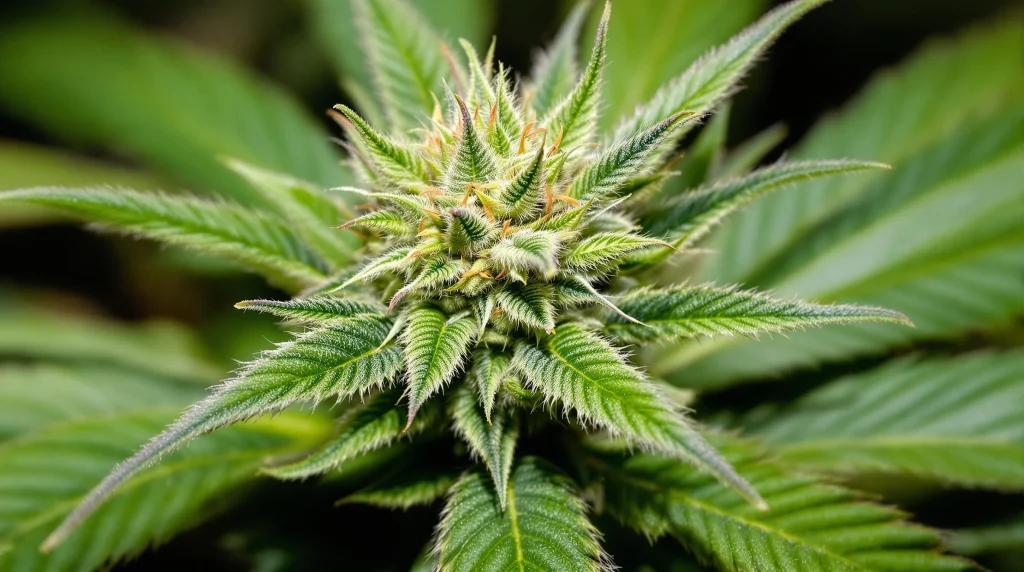
FAQs About Identify Male vs Early Signs of Female Plant
How early can you identify male vs female plants?
Pre-flowers, the small structures that indicate a plant’s sex, typically begin to appear 4-6 weeks into the vegetative stage. This timeframe provides growers with a critical window to examine their plants closely and make determinations. Early identification helps prevent unwanted pollination and ensures you can focus your resources on nurturing female plants for higher-quality yields.
What tools help identify cannabis plant sex?
Several tools are available to assist growers in identifying the sex of their cannabis plants. Magnifying glasses and handheld microscopes are affordable and effective options for examining pre-flowers up close. These tools allow growers to see the subtle differences between male and female structures, such as the round pollen sacs of males and the teardrop-shaped calyxes with pistils of females.
Can stress cause a female plant to turn male?
Stress is a significant factor that can lead to the development of hermaphroditic traits in cannabis plants. Environmental factors such as inconsistent light cycles, extreme temperatures, and nutrient imbalances can push a female plant to produce male pollen sacs alongside its female flowers. This condition, known as hermaphroditism, increases the risk of self-pollination and lowers crop quality.

